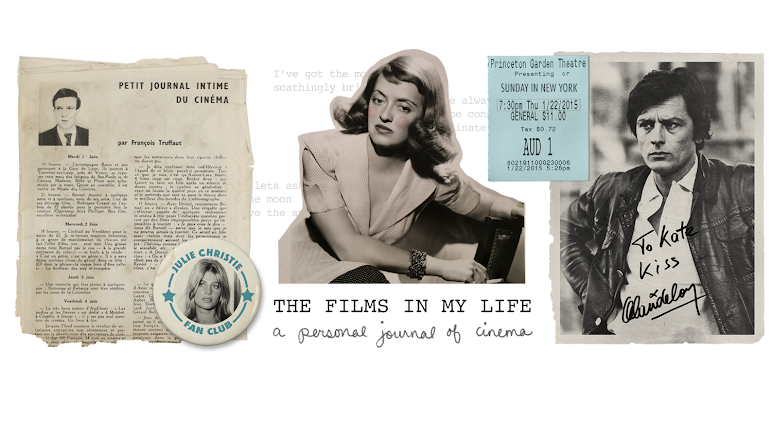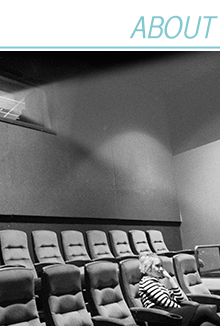Silent Faces, Secret Thoughts
January 18, 2010
by Chris Edwards
of Silent Volume
guest blogger
Emotions are rough and fluid things—sudden, sometimes extreme, universal and impermanent. While all of us express emotion when we feel it, and can occasionally fake it, too, it takes a gifted artist to observe, explore, then reproduce the full breadth of human emotion. Silent film actors, blessed with long shot-lengths and the need for pantomime, did it better than anyone. The best of them could present a symphony’s range of feelings with exquisite precision. Nevertheless, the simplest word is more precise than the most talented face.
Speech both describes and defines. And in cases where our interpretation of a character’s thoughts may be in doubt, speech often reduces our options. Rhett Butler, for example, is anything but ambiguous when he delivers his famous goodbye to Scarlett O’Hara. We get the message. Only Scarlett, with her gigantic ego, could still think he gives a damn. But is such certainty really so valuable?
While I’m not suggesting Gone With The Wind would have been better silent, I do wonder how silent actors might have tackled that final moment between two people with such a long and painful history. Silent films remind us that moments are pregnant with possibility, just as a look can have many meanings. Anything, and indeed, everything, can come to the fore.
Enough talk. Let’s look at some clips from four films, starring four icons of silent-era femininity, each of whom was an expert at telling stories with gesture alone. The emotions these women express have no clear boundary-lines—joy and sadness blur into one another and, in some cases, the character’s innermost feelings remain open to debate. There are intertitles in some of these clips, yes, but most are superfluous. The words don’t really matter. Our bond with the actors is more visceral than that.It (1927)
My first selection is not a single scene, but a pair of clip compilations from Clara Bow’s 1927 hit, It. It is not a comedy-drama, but a light romantic comedy. All the more amazing, then, that Bow manages to express this range of intense emotion over the course of 72 minutes:
Bow builds her character out of pure charisma. Doing so allows her to hold that character together, even as she swings for the fences in one scene after the next. She is earnest, and we invest in her totally.My Best Girl (1927)
Bow needed to be all things in It; but in My Best Girl, Mary Pickford was called upon to be all things in a single scene. Pickford plays Maggie, a department store employee who falls in love with (and is loved by) Joe Merrill, son of the store’s founder. The elder Merrill, fearing his boy has been taken in by a gold-digger, visits Maggie’s house and offers her a cheque to ‘go away.’ Joe arrives to thwart the plan, but Maggie, worried she’ll ruin him by association, now tries to reject him. (The scene begins about a minute into the first clip.)
This is an incredible dramatic juggle by Pickford, who must act the part of a non-actor trying to act bad, but secretly hoping she fails. And she’s got to be funny, too.The Mothering Heart (1913)
Films of this age aren’t known for their deep character studies, but D.W. Griffith and Lillian Gish weren’t your average pairing. Griffith’s direction spares us all but the barest details about his heroine (we never even learn her name), leaving the dramatic work to Gish. She, in turn, revolts against The Mothering Heart’s rigid morality-play structure by causing us to question her character’s sanity. Watch the clip from 12:30:
Gish travels to this fragile woman’s every boundary-line. She folds and twists and pulls the scarf. She smiles, then frowns, laughs, then burns with rage, all in seconds. Griffith has manipulated us this way all along—compressing time by ignoring establishing scenes, making the woman’s life feel too rapid and urgent. Now, Gish herself contorts her childish character into someone suddenly and unstably adult.The Temptress (1926)
The Temptress is typical of Greta Garbo’s smouldering silent work. Garbo’s Elena once tortured Manuel with her charms, but now she’s fallen on hard times. After years apart, he rediscovers her on the streets of Paris:
How did Elena end up like this? We don’t know. Likewise, we’re unsure what Elena is feeling now. List the emotions on Garbo’s face: shyness, shame, uncertainty, scorn, amusement, devotion... is one real and the others, simply put-ons? Is she even sane? I love the ambiguity. It pulls me in.
Perhaps this lack of clarity is part of why silent films hold such charm for me. In an era when I can control the volume, aspect ratio, contrast and soundtrack of any DVD I watch, and perhaps select alternate endings or even hear the director’s thoughts on the day of a shoot, it seems like I have total control over what I watch. But I will never, ever be sure what Greta was thinking that day in Paris. The mystery begins there.
Subscribe to:
Post Comments (Atom)




















4 comments:
Chris: Your post really blew me away! What really drew me in to silent films was how than can convey such intense emotions, and how much the viewer gets involved when speech is removed. You really captured what make silents so great!
Kate: I love your titlecard! :)
Thanks Elizabeth. I'm especially glad to get the Lillian Gish clip out there. No one's heard of that movie, but I find it fascinating. And weird.
And I concure on the title card, Kate. Much obliged.
Thank you so much for doing the post, Chris! I understand exactly what you mean -- and you have me wanting to watch silents a lot more often now!!
Thank you both about the title card! I think I went through three mechanical pencils, I used so much lead but I'm really happy with how it turned out :-D
Great post! (and I agree with previous comments -- great titlecard!)
Thank you so much for sharing those clips. I've only recently been getting into silent films and I love their intensity. After reading this post I definitely want to see more of Clara Bow and I absolutely loved the Mary Pickford clip. I'm really wanting to see the whole film now.
Post a Comment